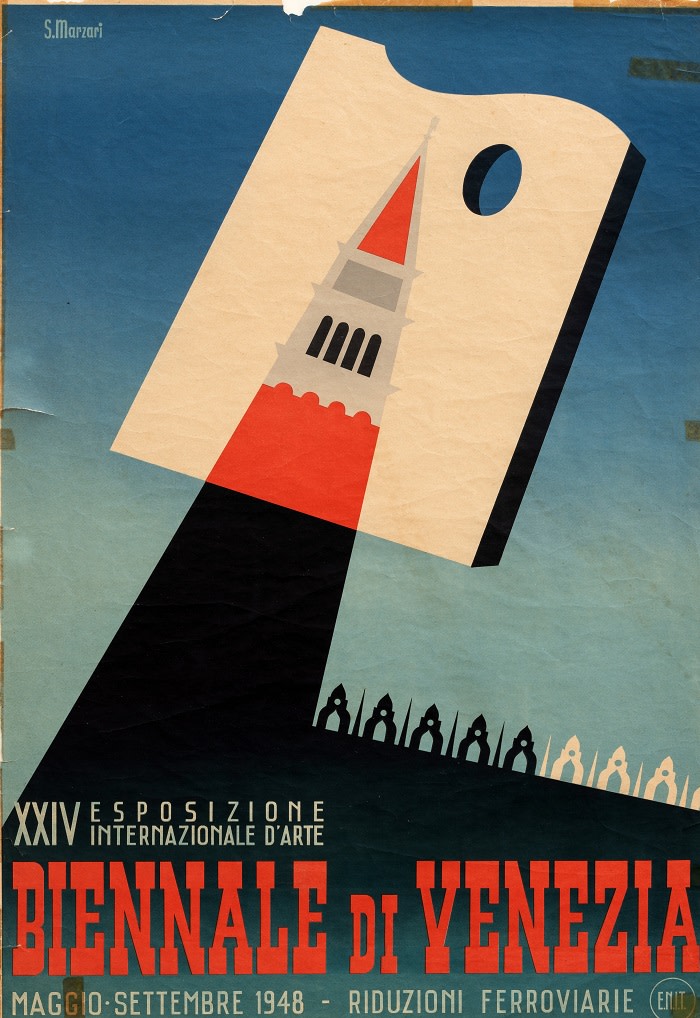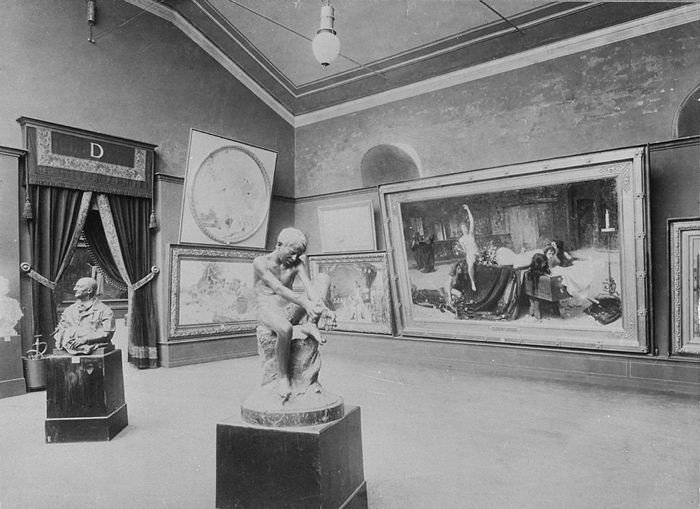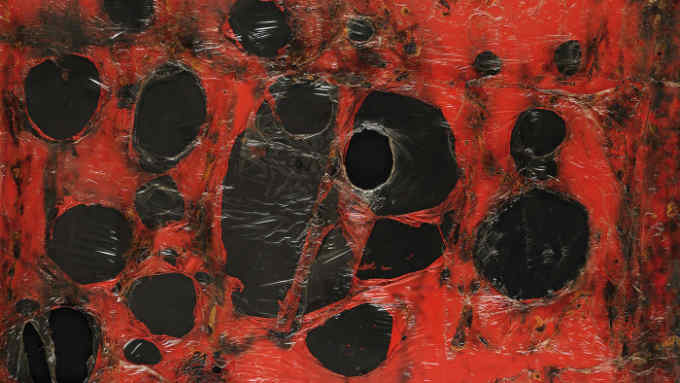The difficult business of archiving a Biennale

Simply sign up to the Arts myFT Digest -- delivered directly to your inbox.
Have you ever seen a crane on a boat lifting wood through an old nunnery door though?” This curious question was posted on the Instagram account of Cymru yn Fenis (Wales in Venice), the body behind the country’s national pavilion at the Venice Biennale, a key off-site collateral event.
At the 58th edition of the Biennale, the Cardiff-born artist Sean Edwards will fly the flag for Wales, showing works at the Santa Maria Ausiliatrice, a former convent located midway between the Giardini and Arsenale exhibition sites. Part of Edwards’s body of work (“Undo Things Done”) was delivered by waterway and lifted in through the entrance; the installation process was recorded on Instagram, building a picture of how such an event comes together in La Serenissima.
The various parts of the Biennale are documented and captured for posterity every two years, benefiting scholars and art historians. But how to amass and archive the sea of artistic material generated via the shows in the national pavilions and the main international exhibition?
Every country documents its national participation in different ways, some more forward-thinking than others. SIK-ISEA, the Swiss Institute for Art Research, oversees a practical online archive detailing the Swiss Biennale contributions, going back to 1920. Vintage images from the 1934 event show the overlooked Swiss painter and sculptor Cuno Amiet on the steps of the Swiss pavilion with visiting dignitaries (the pithy caption tells us that Amiet is in the centre with “the white goatee”).
At the Danish pavilion — this year featuring Larissa Sansour — every show is photographed but not filmed; images and documentation dating from the 2009 Biennale can be found on the website of the Danish Arts Foundation, the organisation that commissions and runs the pavilion. “Every decade we are asked to hand in basically everything that we have to the Danish National Archives. This means that if you are a researcher, you can go there and search for documentation of the pavilions, dating all the way back to 1895,” explains Tine Vindfeld, project lead for the Danish Pavilion.
Some of us still crave print material, and many national contingents still produce catalogues of their presentations. The Dutch entry, represented this year by Iris Kensmil and Remy Jungerman, will be accompanied by a catalogue published in co-operation with the Mondriaan Fund. Catalogues are also produced for each British Pavilion exhibition.

Artists themselves also want to make sure they keep a memento of what is often the most important project of their career. In 2007, Daniel von Sturmer was one of three artists representing Australia at the 52nd Venice Biennale. “I, and Anna Schwartz Gallery [in Melbourne], have documentation photos as well some other components — visitor books, for example,” he says. Mike Nelson shot a Super 8 walk-through film and took numerous photos of his 2011 installation in the British pavilion.
Crucially, there is an overarching historical archive overseen by the Biennale administration, established in 1928. “Its purpose is to recover and preserve materials of different types and origins, concerning the works and the involvement of the participating artists. The archive collects documents and collections related to the activities of La Biennale di Venezia, gathered from 1895 [the year of the first Biennale] to the present,” a spokesperson says.
In a historical backflip, the Polish-born, London-based artist Marysia Lewandowska has looked to the historical archive for her work “It’s About Time”, to be presented in the Pavilion of Applied Arts in the Arsenale. She discovered records of meetings held by the mayor of Venice, Riccardo Selvatico — dating from 1893 — which led to the creation of the Biennale two years later.
“The meeting documents served as a starting point for a new script and voice recordings developed together with a group of Italian feminists living in London, speculating a scenario in which the foundations of the first Biennale were built by women,” Lewandowska says.
The Biennale historical archive is split between two locations in Venice. Since 2008 the Historical Archives of Contemporary Arts (ASAC) has been based at the VEGA Scientific Park in the nearby industrial district of Porto Marghera; it houses hundreds of thousands of posters, films and documents for all of the Biennales held in the city including architecture, dance and cinema events, resulting in mountains of material.
The artistic directors of the main international exhibition are key. “At the end of his or her mandate, each curator consigns a series of documents giving an account of their experience in the Biennale, the ‘construction’ of the exhibitions and the associated activities,” explains Debora Rossi, the head of the Biennale’s archive.
Daniel Birnbaum, the artistic director of the 2009 Venice Biennale, does not recall handing over sheaves of emails but stresses that everything in his exhibition was photographed. “We asked all the participating artists to donate relevant publications. These are now in the Biennale library, which is a very impressive space,” he says.
Visitors to the international art exhibition sometimes pass the Biennale library, the second archive site which opened in the Giardini’s Central Pavilion in 2009. “With 157,000 volumes and 3,000 periodicals, it is one of the leading libraries of contemporary art in Italy,” the Biennale spokesperson says.
Accessing the archive online is difficult, though; images are sparse, having only been uploaded and indexed since the mid-2000s, but through trial and error, the visual arts section can be eventually located (“the system is now going through a thorough revision process,” the spokesperson adds).
Digging deep into the annali (annals) section is like falling down a rabbit hole, revealing the art stars of yesteryear. In 1901, for instance, the artist list throws up a myriad of intriguing names such as Clara and Hilda Montalba, sisters who represented England. There are more than 100 entries clocking Picasso’s Biennale appearances, including his participation in the 1948 Biennale when he showed a 1912 still life.
The archive shows that Giacomo Grosso’s painting “Supremo Convegno” was displayed at the inaugural Biennale of 1895. The scene depicted — five naked women writhing in ecstasy on their dead lover’s coffin — inflamed the Catholic Patriarch of Venice, who demanded that the brazen painting be withdrawn. The archive tells us “the painting no longer exists, because it was lost in a fire on the ship that transported it across the Atlantic for an international tour”. Scandalous nuggets can, after all, be found in any depository.
Follow @FTLifeArts on Twitter to find out about our latest stories first. Subscribe to FT Life on YouTube for the latest FT Weekend videos

Comments